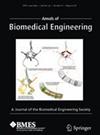Characterization of an Advanced Blast Simulator for Investigation of Large Scale Blast Traumatic Brain Injury Studies
Abstract
Blast traumatic brain injury (bTBI) is a prominent military health concern. The pervasiveness and long-term impacts of this injury highlight the need for investigation of the physiological outcomes of bTBI. Preclinical models allow for the evaluation of behavioral and neuropathological sequelae associated with bTBI. Studies have implemented rodent models to investigate bTBI due to the relative small size and low cost; however, a large animal model with similar neuroanatomical structure to humans is essential for clinical translation. Small blast simulators are used to induce bTBI in rodents, but a large animal model demands a larger device. This study describes a large advanced blast simulator (ABS4) that is a gas-detonation-driven system consisting of 5 sections totaling 40 ft in length with a cross-section of 4 × 4 ft at the test section. It is highly suitable for large animals and human surrogate investigations. This work characterized the ABS4 in preparation of large-scale bTBI testing. An array of tests were conducted with target overpressures in the test section ranging from 10 to 50 psi, and the pressure-time profiles clearly illustrate the essential characteristics of a free-field blast wave, specifically a sharp peak pressure and a defined negative phase. Multiple blast tests conducted at the same target pressure produced very similar pressure profiles, exhibiting the reproducibility of the ABS4 system. With its extensive range of pressures and substantial size, the ABS4 will permit military-relevant translational blast testing.


 求助内容:
求助内容: 应助结果提醒方式:
应助结果提醒方式:


